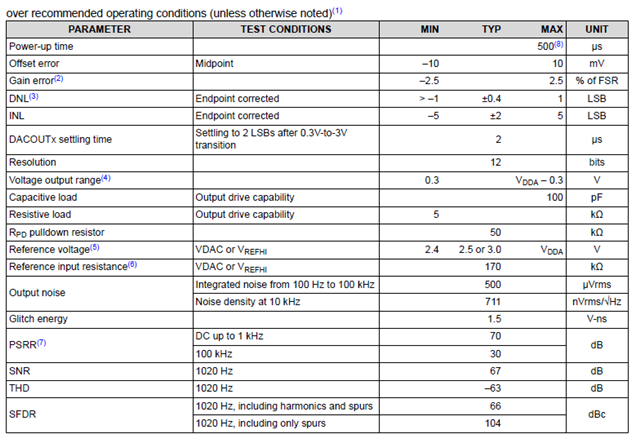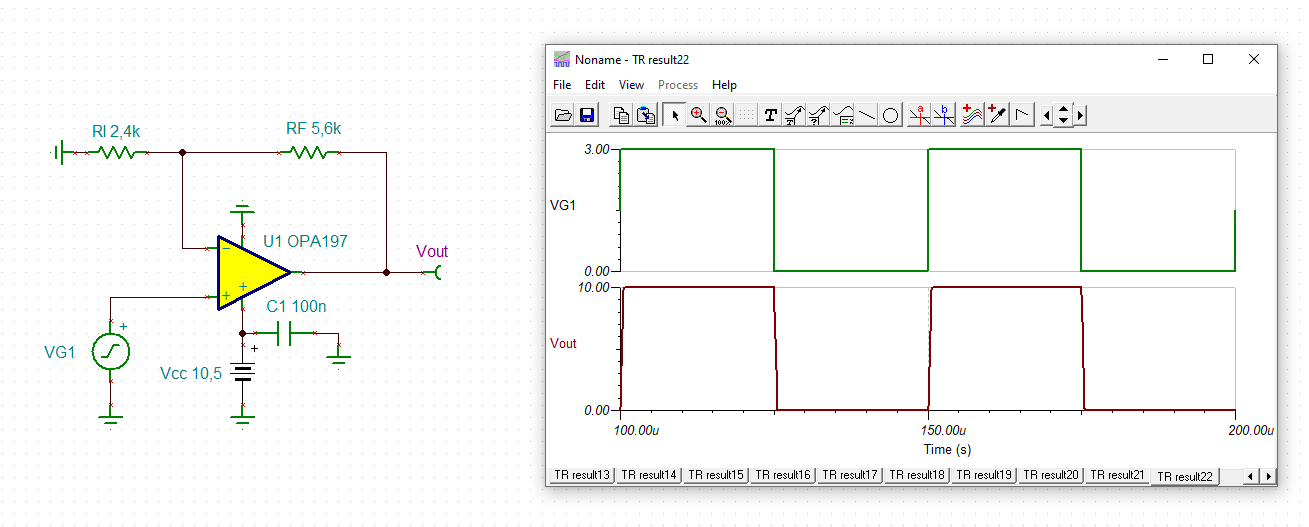Other Parts Discussed in Thread: OPA197
Hi Team,
Does OPA177GS support single supply? What is the range?
Kindly revert.
Thanks,
Vidhya
This thread has been locked.
If you have a related question, please click the "Ask a related question" button in the top right corner. The newly created question will be automatically linked to this question.
Hi Vidhya,
nearly every OPAmp can be used in single supply mode. But with the OPA177 your input voltage must stay 2V away from the supply rails and the output voltage stays 1.5V away from the supply rails. Or by other words, the OPA177 is neither input rail-to-rail nor output rail-to-rail.
Kai
Hi Kai,
OPA177GS is not rail to rail.
For voltage follower case, if VS+/-15V, input voltage range is +/-14V; output voltage swings worst case +/-12V range.
If Vs single supply +15V, input voltage=3.3V does output voltage swing= 0V to 12V worst case or even lesser? lesser to what level ? OPA177GS is precision amplifier
Kindly clarify.
Thanks,
Vidhya
Hello Vidhya,
The OPA177 is a legacy op amp and has been around more than 30 years when dual supplies were commonly specified for powering many operational amplifiers. Such op amps could be powered from a single power supply, but as Kai indicated the input and output range limitations have to be observed. As he said "Or by other words, the OPA177 is neither input rail-to-rail nor output rail-to-rail." Therefore, the input and output ranges need to be observed relative to the single supply V+ = 15 V and V- = 0 V condition.
Since the input common-mode voltage range (VCM) is specified as ±13 V with ±15 V supplies, the VCM range is approximately 2 V from each supply rail. Thus, the VCM range would be from approximately +2 V to +13 V for a single +15 V supply. Similarly, the Output Voltage Swing for RL ≥ 2kΩ is ±12 V for ±15 V supplies, or about 3 V from each supply rail. Therefore, the OPA177 output swing with a single +15 V supply would be from approximately +3 V to +12 V. If these constraint's are observed, then the OPA177 can be applied in a single supply +15 V application and should perform well.
Do note that the OPA177 datasheet specifications are specified with the ±15 V condition. It is likely that there will be some differences in the various parameter values when a single +15 V is used. The datasheet does not provide any information about what they may become with a +15 V supply so no assurances are made by TI what they will be. I expect you won't observe any significant differences in the parameter values, but do understand they may be different.
Regards, Thomas
Precision Amplifiers Applications Engineering
HI Thomas,
Thanks for a very detailed explanation.
For my application, I am looking for a precision opamp.
Input to opamp is 3V DACOUT. Expected output swing is from 0V to 10V.
How to decide on the right opamp. Please suggest.
12bit DACOUT specs from C2000 MCU is as below.

Regards,
Vidhya
Hi Vidhya,
I would take the OPA197:

Keep in mind that the C2000's linear output voltage range is 0.3V...VDDA-0.3V.
Kai
Hi Vidhya,
yes, of course. As the input voltage in my simulation is centered arround 1.5V the output voltage will also be centered arround 5V.
Another method to analyze the behaviour of this circuit is to analyze the "DC transfer characteristics":

So everything is fine
Kai
Hi Vidhya,
The OPA197 that Kai recommends is easy to apply in a single supply application and provides highly precision performance. The OPA197 linear output voltage (Vo) swing range is specified as (V–)+ 0.3 V < Vo < (V+) – 0.3 V, for RLOAD = 10 kΩ and VS = ±18 V. Therefore, the supply will need to be somewhat greater than 10 V to accommodate the 10 V Vo requirement of the application. The Vo swing range should be very similar to that obtained with VS = ±18 V even if Vs is lower. If RLOAD is lower than 10 kΩ such as 2kΩ, then Vo will be more restricted as the datasheet indicates.
Regards, Thomas
Precision Amplifiers Applications Engineering